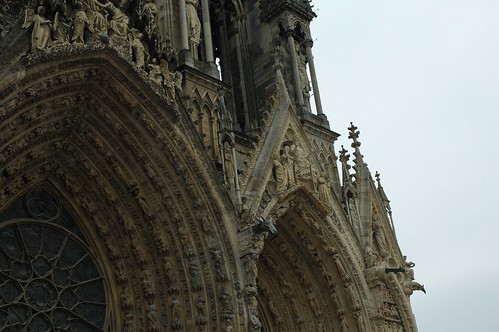
During our visit the temperatures hovered at or below freezing. Since Reims is mostly walkable (when you’re bundled up well), we checked out the city center and cathedral, and then headed south to the Les Crayères neighborhood to check out the Champagne Houses. We booked tours at G.H. Martel and Champagne Pommery. During the high season, it is recommended that you call at least 2 weeks in advance since most places fill up. They tours are offered in many languages with French and English the most common. The next day we headed out on a wine drive through Champagne.
Now some quick and dirty history: Reims was occupied by the Romans during the Gallo-Roman era. They dug through the limestone to build massive subterranean chambers some 30 meters underground. These crayères or chalk pits became the ideal storage conditions for champagne storage. During the 17th century, Champagne houses were built on top of the chambers. There are more than a dozen kilometers of underground tunnels that are used for Champagne. These tunnels and caves were also used as a place to hide during World War 1.
Champagne does not improve with aging the way that wine may improve. Champagne should be consumed within 1 year of purchase (as one tour guide joked if you could wait that long), and only wines grown from this region can be called Champagne. The grapes grown for producing Champagnes include Chardonnay, Pinot noir, and Pinot meunier. Chardonnay grapes are light-skinned grapes with white juice, and Pinot noir and meunier are dark-skinned grapes with white (clear) juice. I learned that many champagne producers will add a “shot” of color to produce a uniform rosé color, because if they rely only on the Pinot noir (a black-skinned grape with white juice) the colors will be closer to auburn or a more orange-y tint. Many champagnes will be a mixture or blend of several years non-vintages (sometimes 60/40) of Chardonnay and Pinot noir and/or Pinot meunier. During times of exceptional harvest, the head champagne maker will call a year a vintage. Champagne bottles with the year written on them are vintages years.
I am not a champagne expert, but I enjoyed the drier (brut) champagnes because of their mineral-y bright finishes. I noticed that the flavors became more pronounced as the champagne warmed, and the carbonation makes you want to drink more. At G.H. Martel we had an exceptional tour guide, and since it was only Karl and me, we got a private tour. After the tour, we sampled 3 champagnes. The first was a Chateau de Bligny Blanc de Blanc (e.g. the blanc de blanc means that the champagne was made from the white grape juice from Chardonnay grapes). It tasted like a bright summer day, or perhaps reminded me of warm weather. It had a mineral-y bright finish, and tasted of lemons. The second was called Vieilli France Rose from Champagne Charles de Cazanove. This tasted of green apples. We lucked out with our third tasting since earlier that day, there were some wine VIP’s that were visiting. They had opened a 1999 vintage Victoire Fût de Chêne (1999 was supposed to be a great year for Champagne wines) and we got to sample some! This was a really pleasurable champagne to taste. The bubbles were noticeably finer, the aroma seemed much deeper, almost like a lambic beer, and instead of fresh fruit, the flavors were sharper and more concentrated, and it reminded me of dried plums or figs. Our tour guide was incredible. At the end of our tasting, he gave us some recommendations on eating and what to see on the wine routes. Since he saw how much fun we were having, he let us try another rosé before we headed to our next visit.


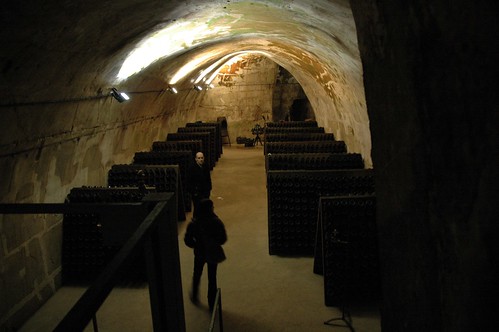
Champagne Pommery is an enormous champagne house, and in contrast to the quaint small G.H. Martel, Pommery is run like a huge business/museum. We booked a 30-minute tour and got to head down into the network of caves below the Champagne House. There was a modern art display interspersed throughout the tour, which gave the visit a unique feel. Since we had such an intimate tour at our previous location, I had more fun taking pictures since the set up was remarkable and beautiful. There are 18 km of chalk cellars below Pommery, and it houses ~20 million bottles of champagne. It was huge. The tour ended with 2 tastings, and since it was run quickly, we got our samples at the same time and took a seat just in time before the next tour group finished.
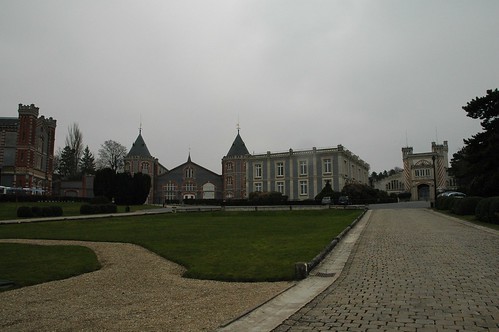
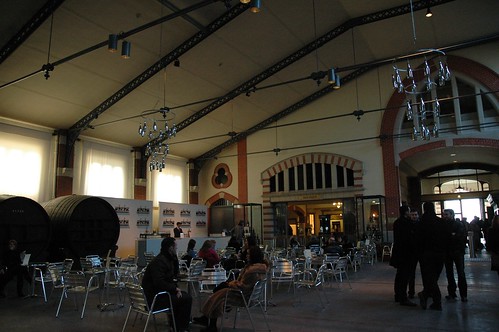
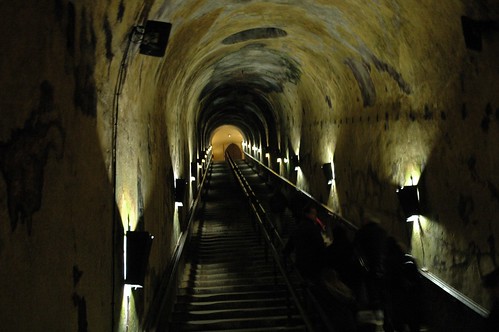
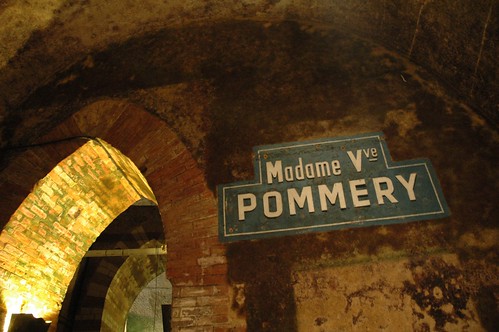
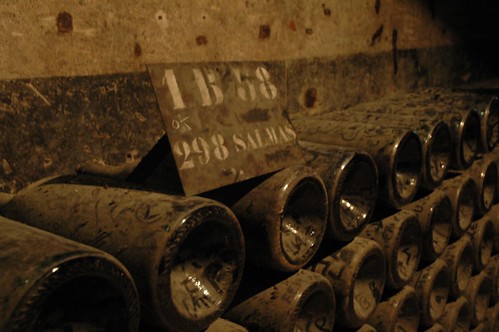
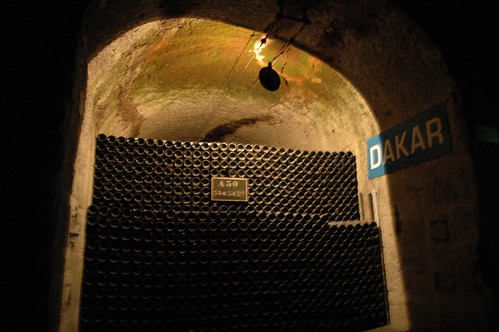
Reims is a nice starting point for two of the champagne drives (there are a total of four drives, with the other two starting in Epernay). The two from Reims are the Massif de St-Thierry (70 km) which is northwest of Reims, and the Montagne de Reims (70 km) which is south of Reims. The wine routes are well marked with signs, weave through the countryside with vineyards as far as the eye can see, and take you through many small villages where smaller champagne houses are located. We drove the Montagne de Reims and stopped often to take pictures and marvel at the sights.
I checked out two tour books, Lonely Planet's Discover France and Eyewitness Travel's Backroads France, from the library to help us with other details such as figuring out a reasonable time frame for our visit. I am often frustrated with the lack of practical information available, as English translations on official tourism websites are often not complete, and most wine tourism sites exist to sell you information.
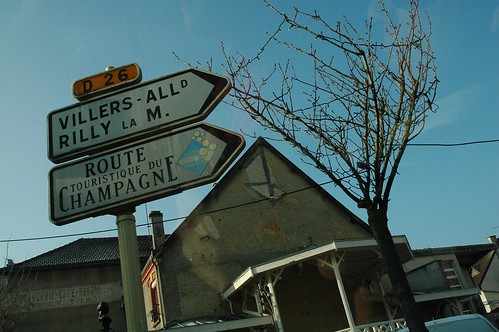

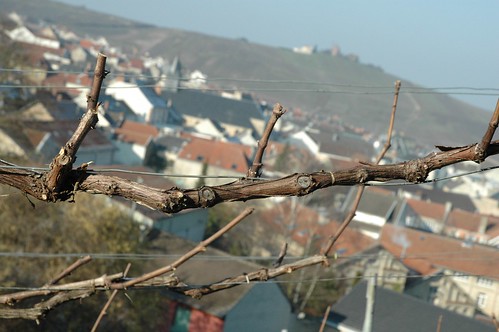


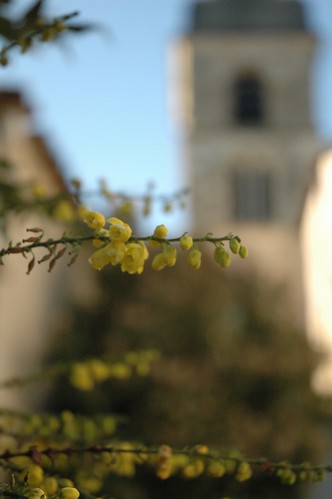

I'm so excited for you that you get to visit all these beautiful places. Love the pics!
ReplyDeleteJai
Thanks Jai! I'm not missing the snow at all. This was such a gorgeous trip. Have you been? Glad to see you are back on the grid again!
ReplyDeleteNilam,
ReplyDeleteI'm only just now catching up with this awesome post! Love the photos, although I enjoyed reading your tour description, wine background and historical notes even more! Wow, who knew lunch-time reading could be so educational and interesting? ;-)
I had no idea that non-vintage Champagne is supposed to be drunk within the year. Wow, that means that AK and I have to attack that bottle of Moët & Chandon and of Veuve Cliquot ASAP! :)
I'm curious, did you take some of the eating/touring advice from the first guide?
Nico
Nico, yes it was from the first guide; as for aging Karl and I understood it as vintage and non-vintage, although we could have understood wrong. I don't think it'll be of benefit to let it age too much longer (the way that you can with some beers and wine). Nice score on the champagnes!
ReplyDeleteI'm good, glad to be back on the grid too! I was losing my mind without a laptop and finally gave in a bought a pc.
ReplyDeleteJai